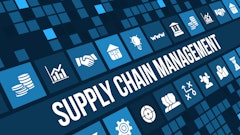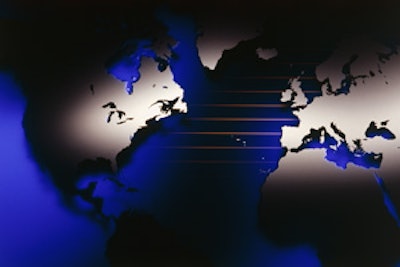
Global trade has grown rapidly for decades, driven by improved technology and long-term macro-economic forces such as the shift to worldwide sourcing and dramatic cost-of-living, wage and currency gaps between advanced and developing countries.
At the same time, trends with the potential to restrain trade — protectionism, for example — have always existed. Post-9/11, security has emerged as a primary restraining factor that can significantly affect global trade volume and growth. However, some security programs, such as the 10+2 initiative, while appearing to add costs and delays to trade in the short to medium term, have the potential, for companies that embrace them properly, to have a net positive effect on global supply chains due to their alignment with quality control principles of the quality revolution.
10+2: It's Real
Arguably the most invasive import security measure put forward to date, US Customs and Border Protection's (CBP's) recently-enacted 10+2 Import Security Filing (ISF) initiative imposes major changes. The program takes effect on January 26th, 2009 with a one year "informed compliance" grace period, with "enforced compliance" beginning January 26th of 2010. These changes will reverberate across the supply chains of the U.S. and its trading partners, as well as other regions such as Europe and Asia that have already announced intentions to implement their own advanced trade data filing programs.
Essentially, 10+2 extends the 24-Hour Manifest Rule and enables the CBP's Automated Targeting System to more easily identify high-risk ocean shipments bound for the US. The ISF requires specific information — 10 data points from importers and 2 from carriers — at least 24 hours before a vessel is loaded. The good old days of "load now, file later" are gone, and players across the supply chain must find effective ways to cope with the new requirements and the increased costs they bring with them.
Prevention: A Tenet of Successful Quality Improvement
Interestingly, while most industry stakeholders have been concerned about the increased supply chain costs generated by 10+2, the program's most compelling feature is its alignment with a key tenet of the total quality management revolution that transpired in the 70s and 80s — higher quality can be achieved with lower overall costs. That is, by focusing on upstream prevention rather than downstream inspection, companies can lower their overall costs. In the case of 10+2, with a focus on upstream visibility and prevention of security and other data-related errors, as opposed to downstream container-level inspection and data reconciliation, companies can prevent or mitigate security breaches while keeping commerce flowing more efficiently than in the past.
As a result, importers, carriers and other trading partners would be wise to look at 10+2 as an opportunity to improve the overall efficiency of their supply chains, rather than simply as an obstacle to overcome.
What is the Impact to Trading Partners?
Each player in the supply chain will be impacted differently. Below is a brief summary of impacts for key trading partners:
- Buyers. Buyers will be most affected since they have to perform a new function, or designate an agent to perform services for them. CBP has estimated an incremental cost per shipment of $50-400 for importers. The Importer will bear this cost by investing in systems and personnel to directly handling 10+2 filings, through paying a designated agent such as a broker or overseas forwarder, or by sharing the compliance burden with suppliers or other third parties.
- There are several key gaps for buyers:
— Lack of IT systems in place to obtain and manage all of the information asked of them, such as Manufacturer and Seller Name and Address at the line level.
— Lack of personnel in the right location, with proper skills, or with timely access to information.
— Processes in place to manage overseas supplier-related activities in a short time window.
In addition to the costs importers will incur through investment in systems and personnel, and the potential additional working capital, importers will be faced with potential penalties and fines.
- Sellers. Timing will be the biggest issue for sellers While 8 of the 10 importer-required data elements are already prepared by sellers in their commercial documents, they often do not have time to prepare the documents before the vessels are loaded and departed. Typically, sellers will get documents to customs brokers only days before arrival at the U.S. port. As a result, sellers are considered the "long pole in the tent," which will present the most significant Change Management challenge in converting to the newly dictated timeframe.
- Carriers. Because they must transmit two additional data types, there is a direct additional cost to carriers. CBP has estimated an incremental cost of up to nearly $100 per vessel trip for the Vessel Stow Plan, and a cost of up to $700,000 over a ten year period to put in place systems for Container Status Messages for those carriers initially lacking such systems.
- Foreign-based Forwarders. Foreign-based forwarders are well positioned geographically to work with sellers and manufacturers. However, these forwarders often lack the IT systems and personnel to manage the classification tasks required to produce HTS numbers at the line-item level. With investments, however, they may be poised to take on new services, thereby gaining new customers and new revenues.
- U.S. Brokers. Brokers have the expertise and systems to perform all of the tasks required by 10+2, including HTS classifications, but they often lack the overseas presence and relationship with suppliers. As a result, they may end up partnering with or acquiring overseas forwarding operations, or building up their own. Even without having ‘boots on the ground' in overseas locations, brokers will likely obtain additional service revenue for managing more information on behalf of importers.
The bottom line is that in the new regulatory environment, companies will have to deal with IT systems, processes and personnel that were not set up to managing tasks at different times, in different sequences, and at a more granular level.
Companies that do comply with the ruling, but with inadequate personnel, processes or technology will probably see not only increased costs, but a deterioration of their working capital position.
What to do?
Given all this, perhaps the biggest question on everyone's minds is what to do. It's clear that companies need to change business processes, systems, partners and personnel, yet there is no prescribed or standard solution that dictates how.
There are four criteria are critical in considering a 10+2 solution:
- Process re-engineering — Given 10+2's compressed timelines, companies must re-engineer processes that formerly occurred over 10 to 20 days.
- Allocation of responsibility — The relationships importers have with their trading partners and the capabilities of those partners will drive this decision.
- ISF filing approach — Importers will need to choose between third-party or self-filing options and whether to file the ISF and Customs Entry at the same time.
- How — and how much — to automate — Web-based Global Trade Management solutions can streamline and accelerate trade processes, but will require investment of time, effort and upfront resources.
10 + 2 As An Opportunity to Improve Your Global Supply Chain
This directive, rather than simply causing more work and short term cost, can be used by importers and other trading partners to drive a greater degree of automation, upstream quality control, visibility, and collaboration that will lead to more efficient business processes.
Below are examples of how process re-engineering accompanied by automation may help companies turn the 10+2 initiative into an advantage:
- Simultaneous and Self-filing of Customs Entry Documents
- Electronically Connected Buyer/Supplier Communities
Some importers will choose to file the Entry at the same time as the 10+2 ISF, since some of the data elements are common on the two documents. This could enable companies to avoid delays they otherwise may have incurred had they waited until the last few days before vessel arrival at the US port, as is common practice today. Simultaneous filing also eliminates the potential of discrepancies in the information filed, which could lead to further delays.
Similarly, the increased role taken by importers may push them to begin to self-file their customs entry documents, thus lowering their costs by eliminating or reducing their fees to brokers. Self-filing has been available for some time, but many importers have not engaged in it because they have not had the systems or expertise in place. This initiative may be the catalyst inspiring importers to consider such potential savings opportunities.
Companies have made headway in electronically connecting buyers and their plants with a community of suppliers in domestic and regional settings. Connecting buyers with overseas suppliers has been more challenging, and there has been less successful adoption.
There are a variety of potential approaches to meeting the needs of the 10+2 initiative, but one approach involves directly connecting manufacturers or suppliers with their buyers via Web-enabled portals. Such connectivity enables timely and accurate information sharing and visibility throughout the supply chain. The benefits of establishing such a well-connected network go well beyond compliance with 10+2. Some of the additional benefits of establishing a Web-enabled community of connected buyers and suppliers are as follows:
— Global Inventory Replenishment: Improve visibility, lower inventory buffer stock and avoid expediting with lean inventory management.
— Responsive planning and control: Improve visibility, better demand signals, early detection of and responsives to potential delays, contingency management.
— Global Scorecarding: Manage vendor performance online with Supplier Report Cards tied to logistics, regulatory compliance and finance transactions.
— Supply Chain Finance: Provide suppliers with more flexible and lower cost pre- and post-shipment finance options.
— Origin Management: Prove country of origin of suppliers to prove qualification for free trade agreements.
— Strategic Sourcing: Upstream, accurate landed cost information available to sourcing personnel to improve decision-making.
— Quality Management: Maintain vendor quality and other master-level information to expedite customs processing.
There are numerous bottom-line benefits for companies that take this opportunistic approach to the 10+2 initiative. Improved visibility, collaboration, automation and upstream quality control will in the long run enable more effective planning, increase the responsiveness of the supply chain, improve asset utilization, lower costs from fines and manual labor, lower inventory levels, and potentially improve cycle times.
Ultimately, companies that choose to address 10+2 by proactively improving their supply chains in line with quality management principles will be able to deliver higher customer service, improve the overall efficiency for all supply chain partners, and gain competitive advantage. For these companies, 10+2 may be just the catalyst to enable them to reap the full benefits of global trade.




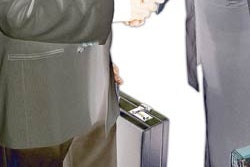

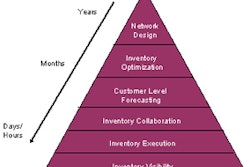




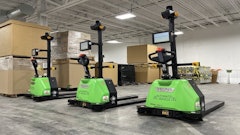





![Pros To Know 2026 [color]](https://img.sdcexec.com/mindful/acbm/workspaces/default/uploads/2025/08/prostoknow-2026-color.mduFvhpgMk.png?ar=16%3A9&auto=format%2Ccompress&bg=fff&fill-color=fff&fit=fill&h=135&q=70&w=240)

